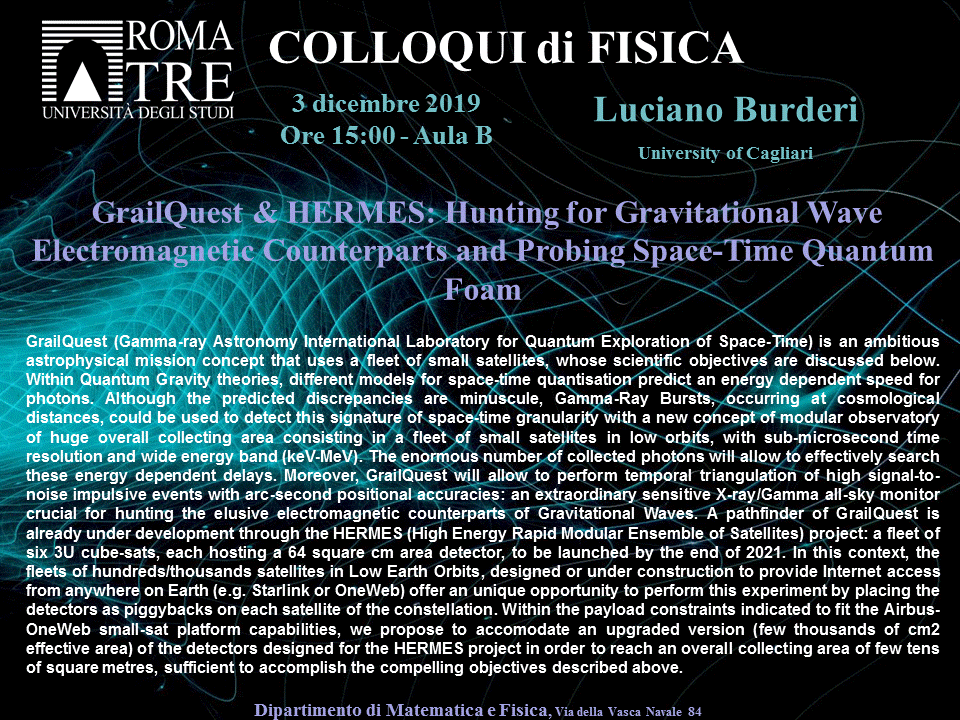
Attività del Dipartimento
Colloqui di Fisica GrailQuest & HERMES: Hunting for Gravitational Wave Electromagnetic Counterparts and Probing Space-Time Quantum Foam
Luciano Burderi 03-12-2019 - 15:00 AULA B - Via Della Vasca Navale 84
GrailQuest (Gamma-ray Astronomy International Laboratory for Quantum Exploration of Space-Time) is an ambitious astrophysical mission concept that uses a fleet of small satellites, whose scientific objectives are discussed below. Within Quantum Gravity theories, different models for space-time quantisation predict an energy dependent speed for photons. Although the predicted discrepancies are minuscule, Gamma-Ray Bursts, occurring at cosmological distances, could be used to detect this signature of space-time granularity with a new concept of modular observatory of huge overall collecting area consisting in a fleet of small satellites in low orbits, with sub-microsecond time resolution and wide energy band (keV-MeV). The enormous number of collected photons will allow to effectively search these energy dependent delays. Moreover, GrailQuest will allow to perform temporal triangulation of high signal-to-noise impulsive events with arc-second positional accuracies: an extraordinary sensitive X-ray/Gamma all-sky monitor crucial for hunting the elusive electromagnetic counterparts of Gravitational Waves. A pathfinder of GrailQuest is already under development through the HERMES (High Energy Rapid Modular Ensemble of Satellites) project: a fleet of six 3U cube-sats, each hosting a 64 square cm area detector, to be launched by the end of 2021. In this context, the fleets of hundreds/thousands satellites in Low Earth Orbits, designed or under construction to provide Internet access from anywhere on Earth (e.g. Starlink or OneWeb) offer an unique opportunity to perform this experiment by placing the detectors as piggybacks on each satellite of the constellation. Within the payload constraints indicated to fit the Airbus-OneWeb small-sat platform capabilities, we propose to accomodate an upgraded version (few thousands of cm2 effective area) of the detectors designed for the HERMES project in order to reach an overall collecting area of few tens of square metres, sufficient to accomplish the compelling objectives described above. org: MELONI Davide Allegati: [Locandina] |



